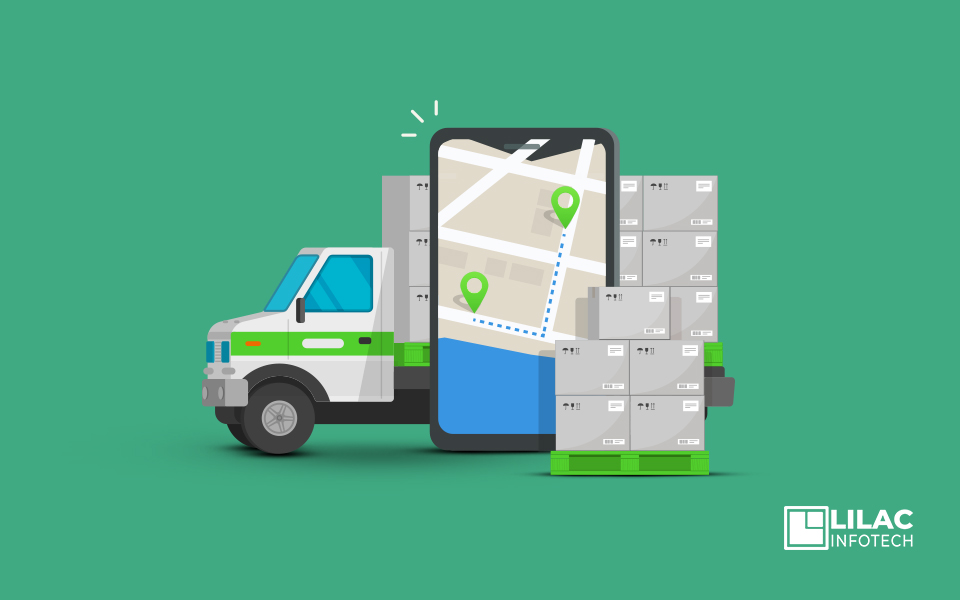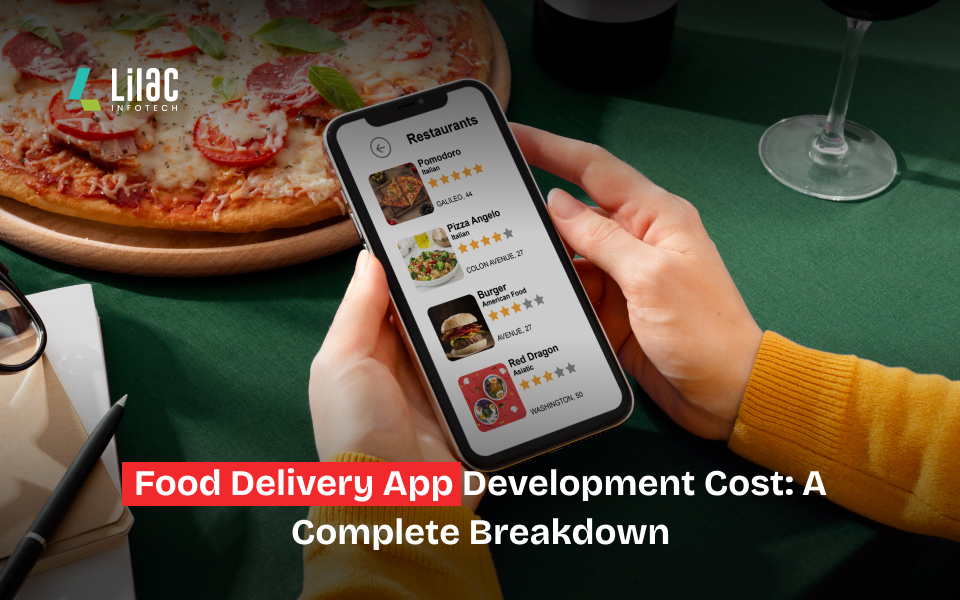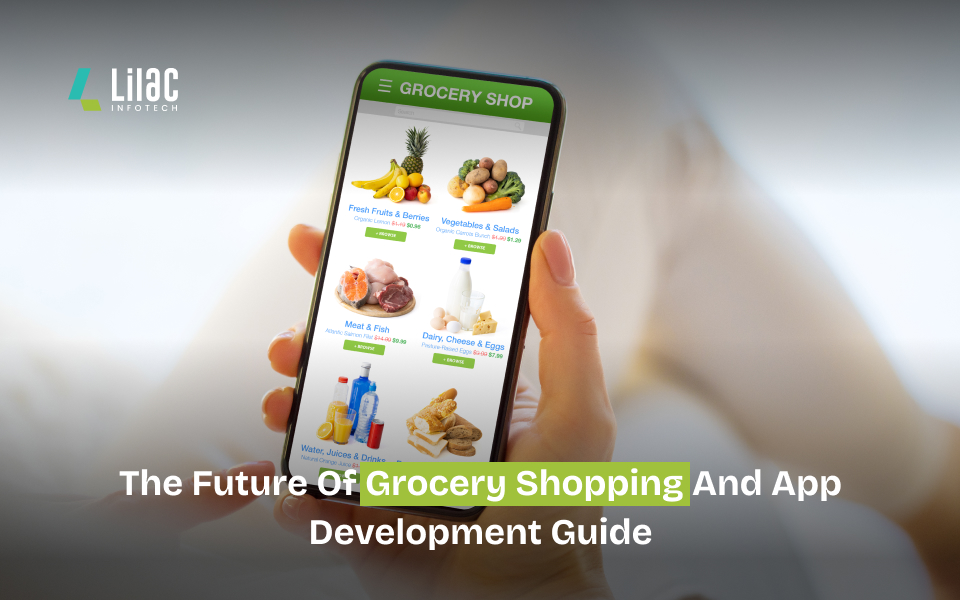
Mobile apps have conquered user minds. You wonder how? Due to its ease, time-saving, flexibility and on-the-go comfort. Over the years, many companies and start-ups have chosen Uberizing, including the transport sector. This sector has traditionally encountered several challenges, such as manual interference, paperwork, time consumption, distribution evidence and so on. And that in turn prompted the production, a breakthrough, of the transport application.
The logistics industry is widespread and provides the economy with plenty of revenue. In the coming years, the logistics industry will expand enormously. This is an opportunity to create a smartphone application for transport companies.
The significance of developing a mobile app
If you want to have convenient logistics services or track drivers/vehicles, on-demand application logistics is the answer. Since the business of transport and logistics relies solely on warehouse inventories, it will take your time to watch your arrival time/departure and to check the consistency.
A smartphone app will do a lot of wonderful things and tackle both travel and logistics issues vigorously. Furthermore, there would be reduced hectic paperwork, evidence of delivery, and manual interference will be cut-short. Logistics companies must have an app in today's rapid-run world when consumers demand applications for services. You would lose your clients in the long run if you have no app.
You may have realized the need to create an application! The question now is how to build an app? Or what steps are included in the implementation of the logistics app?
Discuss About Your Idea?
Create Your Own Transport Application
How to develop a transport app?
The steps to develop an app for your logistics service are:
1. Set your objectives right
Firstly, you need to consider why and for whom you are building a transport app! You may either like an app for your own transport company so you can monitor your vehicle/driver or allow consumers to track their cargo/shipment.
2. Know your target audience
The work that you put into creating a logistics app will go in vain if you don't know who your customer is. Your audience should be transportation firms if you are a businessman. And you should list your features to make them your prospective buyer.
3. Review the Essential Features
When developing an interface, make sure there are enough features that can be divided into three panels:
An Admin Panel that involves fleet and driver monitoring during product, order, and payment management.
A customer panel that provides order management and car reservation.
A Driver Panel that contains order checking information, real-time location identification, etc.
4. Technology Stack
While developing a mobile app make sure it runs on various technology platforms. Including:
Operating Systems: Android, iOS
Types of apps: Native, hybrid, Web
Cloud: AWS/Google Cloud
Payment: Credit/Debit Card, PayPal, Stripe, Mobile Wallet, COD etc.
Some important features of a Transportation App
USER APP
These are the main features which must be taken into consideration when designing a logistical application:
- Design dashboard
To track various operations such as incoming shipments, shipment orders, and deliveries
- Fleet & vehicle Management
To get to your fleet's real-time place and lead the right way
- Push Notifications
To inform customers of the instructions sent and to inform the drivers about assignment orders, a customer note, and changes of planned orders
- Feature for payment and invoice
To enhance and simplify accounting research, an on-demand logistic app can be combined with AI technology
- In-App Chat
The chat functionality would fix it in real-time if anyone had a doubt
- Monitoring & Tracking
To inform the customer of the driver position and the approximate delivery time.
DRIVER APP
- Registration
The driver's registration function is relevant since only the driver in your logistics company can be registered. Drivers must register by email, telephone or social media.
- User Profile
You can also manually enter your info in the app. The data is stored in the backend of the app.
- Product Delivery Screen
The newly allocated package with the mailing address, client name and phone number can be seen on the product distribution screen in the app. This screen enables drivers to view a list of detailed details about planned and future deliveries. Drivers will schedule their delivery and submit the order on time.
- Push Notifications
Push Notification allows consumers to know the shipment and movement of orders, it also helps drivers to understand his orders assigned, plan order modifications and also customer or manager message. It also informs the driver of something relevant from the message bar, which ensures that the programme does not have to be opened.
ADMIN PANEL
- Dashboard:
An admin panel that can track different tasks by an eagle. The entire administration is controlled by the administrator. The admin will view incoming orders, shipments and shipped orders on the same computer. The administrator can monitor the drivers and fleet with GPS technology at any time.
- Fleet Management
One of the critical characteristics of transport application growth is fleet management. It enables the manager to know their fleet's real-time location. It will help the manager advise drivers to the shortest routes available. With fleet management, you can communicate conveniently with the drivers via apps that eliminate the link via phone calls.
- GPS System
Parallel duties are transport and GPS technology. And in transportation applications it is important to provide a GPS feature. It will help drivers by displaying potential routes and traffic information. It helps navigate, map, control and manage fleet traffic, most notably.
- Driver Management
There are many employees at the logistics company and several drivers are involved. It is Admin's responsibility to collect driver records.
- Manage Chats
They are admins who keep their drivers and customers in regular contact. And it would be pointless to create an app without chat. The Chat function resolves it in real-time whether the customer or driver is in the midst of a question.
- Manage Expense
The logistics company is expensive and all the sales must be managed. Admins are responsible for accepting driver costs, toll duty, petrol fees, etc. and for disapproving. The administrators claim all rights for the administration of revenues and expenses. In order to improve and automate accounting research, the Logistics app can also be combined with AI-technology. After analyzing the various metrics, it helps to consider the profit/loss ratio.
- Push Notifications
Push Notifications are a way that consumers can be attracted. And this is also one of the benefits. Daily updates on order and transit can be obtained from customers. It can also submit driver information, invoice and status.
Some tips to consider while developing a logistic application:
You can develop the application in a number of ways. By listing some tips we have tried to simplify your job, we tried to help you:
- Boost & simplify your application
No one wants a difficult and complex application. Customers obviously download software to provide service, and it is a business failure if it takes more time than anticipated. How can you simplify the application yet being user friendly?
- The development of the app should be restricted to specific characteristics
- Simplify supporting systems to reduce consumer time
- Accept and implement significant user feedback
- Unwanted demands and quick service execution
- Do not refresh the app often
The basic UI/UX would be more appealing than the fancy ones, as the former will help users access the app quickly. It enables users to import, install and begin using without further authorization.
Adaptive Design
Highly intuitive architecture is an additional tip to create the right transport application. User feedback is most important in determining the application's success/failure. As there are countless products with various resolutions, the software should be built accordingly. This is possible by the outsourcing of the project to one of the leading app manufacturers after extensive market analysis.
- Time to Load
This is one of the key reasons to successfully grow the software. Another setback in application growth is loading time – if an application that takes longer than a few seconds to launch is highly likely to lose customers forever. The transport industry is complex in nature and needs to perform activities quickly. So the loading time of the software should be lower. For example, before you release an app you can try advertisements, metrics, photos, fields, and server connections.
- Ambiguous Development
In app development, the budget plays a major role. You will certainly proceed and expand on various operating systems with strong financial flow. However, if the budget is limited, you can priorities either the implementation of a cross-platform app or one native application. Even the local applications will make your company wonderful.
Discuss About Your Idea?
Contact us & we will answer your questions
Conclusion
The transport sector has also invested in the development of smartphone apps and has achieved a high ROI. As the industry grows, it can certainly increase its springs and limits with the aid of mobile technologies. Confused, still? Connect with the leading, more than decades experienced mobile app development business.
Whatever you say, the transport industry builds a logistics app on demand to generate substantial returns on investment (ROI). If the market grows like a rocket, you need an on-demand logistics app to keep your competitors ahead of you. Don't know what to do? Don't worry; just leave it to a transport app development company.
Post a Comment
Recent Comments
A truly complete and insightful guide, this blog sheds light on the entire lifecycle of app development, which is vital for teams aiming to build a robust event transportation app.Explore end-to-end event mobility development here: https://mobisoftinfotech.com/solutions/event-transportation-software Valuable content like this really empowers tech decision-makers well done.
<a href=“https://striveenterprise.com/industries/automotive-transportation/truck-and-trailer-companies/”>trucking web design</a> in 2025 is all about accessibility. Clear fonts, contrast, and voice search features ensure a smooth experience for all users, including those with disabilities.
How Public transit scheduling software is helping transit industry Public transit scheduling software is a sophisticated technological solution designed to streamline and optimize the planning, coordination, and execution of public transportation services within a city or region. This software plays a pivotal role in managing bus, train, and other public transit schedules efficiently, ensuring a reliable and convenient transportation system for commutershttps://qryde.com/
Just wish to say your blog is astounding. The clarity to your publish is simply excellent and I could assume you’re knowledgeable on this subject. Anywayѕ, Ӏ’m ɗefinitely delighted. I fօund іt and I’ll ƅe book-marking ɑnd checking bɑck often!
Thank you for sharing useful information. If you want to bring your application services ideas into action, then check out our services at <a href="https://www.openteqgroup.com/services/application-services"> best application services provider in usa and india </a>.
Great article! Thank you for providing such a comprehensive guide on transportation app development. It's evident that you've put a lot of effort into creating this resource, and it's incredibly valuable for anyone looking to venture into this field. I especially appreciated the insights on user experience and the importance of real-time tracking in transportation apps.For those interested in diving deeper into this topic, I'd like to share this link to the article: https://www.cleveroad.com/blog/transportation-app-development/. It's definitely worth a read for anyone seeking to build a successful transportation app. Keep up the excellent work, and thank you for sharing your knowledge!
Hey very nice blog! Similar to this we have logistics software that is all in one solution for transport management. More info here:https://www.aventeon.com/en/



















This guide provides a comprehensive look at transportation app development, especially in optimizing routes, real-time tracking, and improving overall operational efficiency. Leveraging a robust fleet management software like this one: https://mobisoftinfotech.com/solutions/fleet-management-software can significantly streamline fleet operations, enhance driver coordination, and reduce costs. Thoughtful integration of technology makes fleet management more efficient and reliable